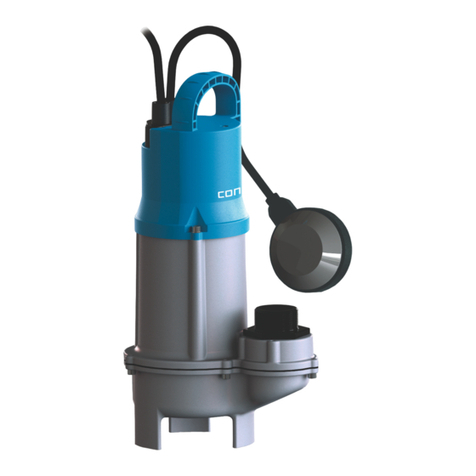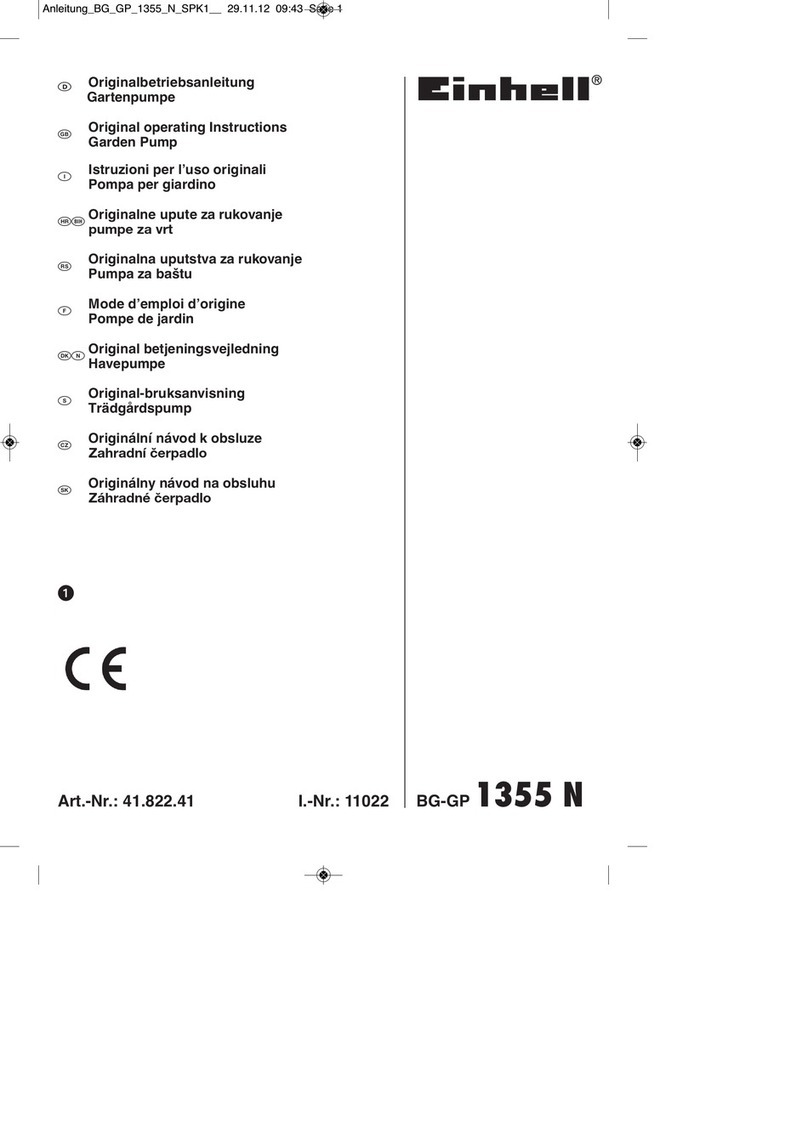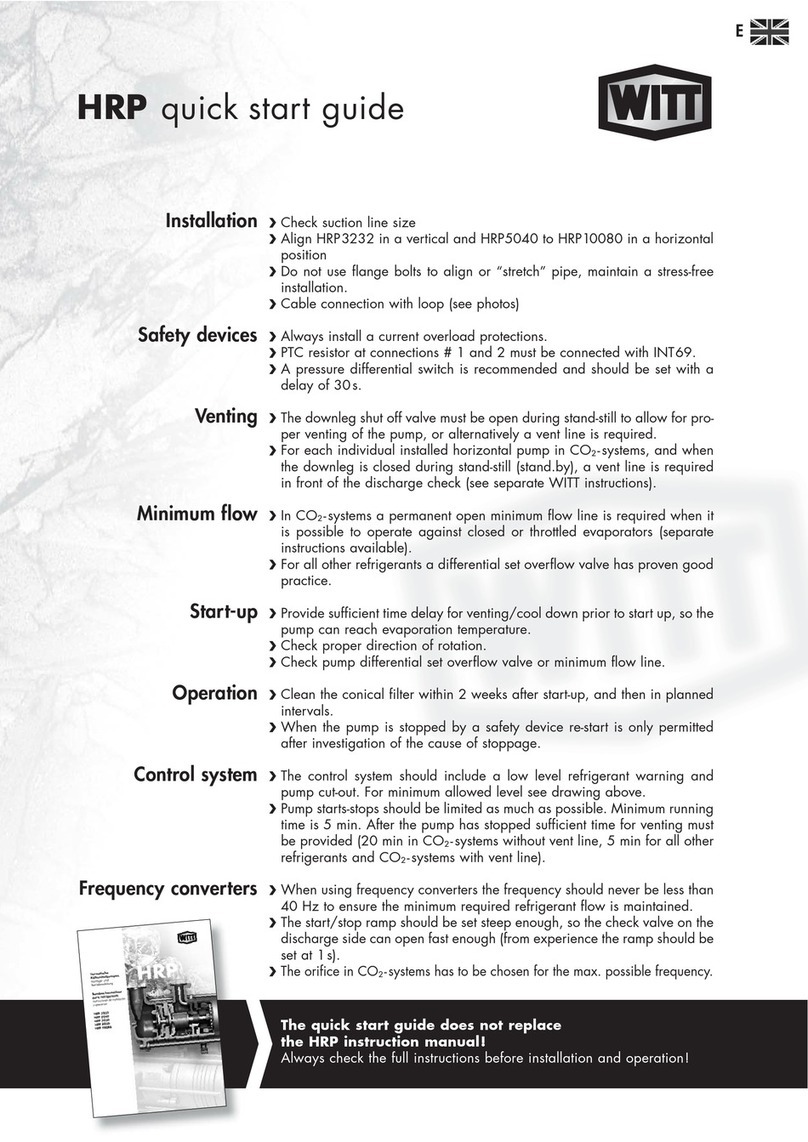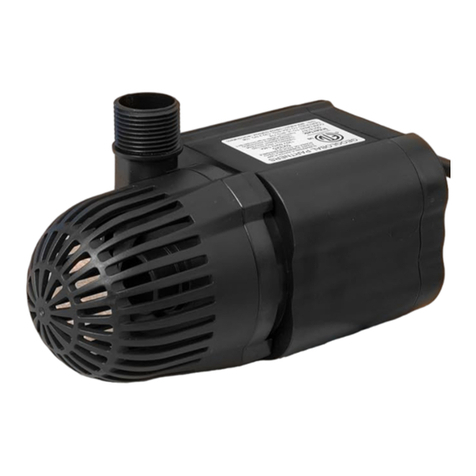GESTRA KH User manual

Steam-Powered
Condensate-Return Unit
KH
Original Installation Instructions
850801-00

Contents
Foreword............................................................................................................................................... 3
Availability .............................................................................................................................................. 3
Other applicable documents .................................................................................................................. 3
Formatting features in the document ..................................................................................................... 3
Safety .................................................................................................................................................... 3
Use for the intended purpose................................................................................................................. 3
Basic safety notes.................................................................................................................................. 4
Qualification of personnel ...................................................................................................................... 5
Protective gear....................................................................................................................................... 5
Typographic features of safety notes..................................................................................................... 6
Description ........................................................................................................................................... 6
Scope of supply and unit specification................................................................................................... 6
Task and function................................................................................................................................... 6
Application of European Directives........................................................................................................ 7
Storing and transporting the unit....................................................................................................... 7
Storing the unit....................................................................................................................................... 7
Transporting the unit .............................................................................................................................. 8
Mounting and connecting the unit ..................................................................................................... 8
Preparing installation ............................................................................................................................. 8
Connecting the unit ................................................................................................................................ 9
Commissioning..................................................................................................................................... 10
Operation ............................................................................................................................................ 10
After Operation................................................................................................................................... 10
Removing external dirt deposits........................................................................................................... 11
Maintaining the unit.............................................................................................................................. 11
Spare parts........................................................................................................................................... 11
Putting the unit out of operation ...................................................................................................... 11
Removing harmful substances............................................................................................................. 11
Removing the unit ................................................................................................................................ 12
Re-using unit after storage................................................................................................................... 12
Disposing of the unit ............................................................................................................................ 12
Returning the unit................................................................................................................................. 13
Technical data .................................................................................................................................... 13
Pressure & temperature ratings........................................................................................................... 13
Weights ................................................................................................................................................ 13
Manufacturer's declaration ............................................................................................................... 13

3
This installation & operating manual will help
you use the steam-powered condensate-return
unit KH safely and efficiently for its intended
purpose. The steam-powered condensate-
return unit KH will be called unit in this
document.
This installation & operating manual is intended
for anyone commissioning, using, operating,
servicing, cleaning or disposing of this unit and,
in particular, for professional after-sales service
technicians, qualified personnel and authorised
and trained staff.
All of these persons must read and understand
the content of this installation & operating
manual.
Following the instructions given in this
installation & operating manual helps avoiding
danger and increases the reliability and service
life of the unit. Please note that in addition to
the instructions given in this installation &
operating manual you must also observe all
locally applicable rules and regulations
concerning the prevention of accidents as well
as approved safety guidelines for good
professional practice.
Availability
Keep this installation & operating manual
together with the plant documentation for future
reference. Make sure that this installation &
operating manual is available to the operator.
The installation & operating manual is part of
the unit. Please hand over this installation &
operating manual when selling the unit or
passing it on.
Other applicable documents
Further notes, instructions and information on
the components of the system can be found in
the documentation of the respective
manufacturer.
These documents form an integral part of these
instructions.
Keep these documents together with these
operating instructions.
Provide these documents if you sell the system
or pass it on.
Formatting features in the
document
Certain text elements of this installation &
operating manual feature a specific typographic
design. You can easily distinguish the following
text elements:
Standard text
Cross-reference
Listing
Sub-items in listing
➢Steps for action.
Here you will find additional useful
information and tips serving to
assist you in using the unit to its
fullest potential.
Use for the intended purpose
The steam-powered condensate-return unit KH
recieves the condensate either directly or via a
condensate collector. In the condensate return
unit, the condensate is conveyed by means of
level control and motive steam to the deaerator
or to a condensate collecting tank.
The unit must only be used within the allowable
pressure and temperature limits and only if the
chemical and corrosive influences on the unit
are taken into account.
Correct use includes compliance with the
instructions given in this installation & operating
manual, in particular obedience to all safety
instructions.
Any other use of the unit is considered to be
improper.
Note that the unit is also used incorrectly if the
materials of the unit are not suitable for the
fluid.
Foreword
Safety

4
Basic safety notes
Risk of severe injuries
The unit may become hot during operation.
Do not operate the unit unless thermal
insulation or protection against accidental
contact prevents you from touching hot
surfaces
.
The unit is under pressure during operation
and may be hot. Before carrying out any
work on the unit make sure that the
following requirements are met:
The pipes and the unit must be shut
off depressurized (0 bar).
The higher-level system must be
switched off.
The fluid must be completely removed
from the unit.
The pipes and the unit must have
cooled down to room temperature
(approx. 20 °C)
If the unit is used in contaminated areas
there is a risk of severe injuries or death
caused by harmful substances in or on the
unit. Before working on the unit make sure
that it is completely decontaminated.
Always wear the protective clothing
prescribed for contaminated areas when
working on the unit.
The unit must only be used with fluids that
do not attack the material and the gaskets
and sealings of the unit. Otherwise leaks
may occur and hot or toxic fluid could
escape
.
The unit and its component parts must only
be mounted or removed by qualified
personnel. A qualified person must be
acquainted with and experienced in the
following
:
Making pipe, vessel and tank
connections.
Selecting suitable lifting gear and
understanding the rules for its safe
use.
Working with dangerous
(contaminated, hot or pressurized)
fluids.
The electrical personnel must also
have knowledge and experience in
electrical connection as well as of the
current and mains voltage used.
If the admissible pressure and temperature
ratings are exceeded, the unit may be
destroyed and hot or pressurised fluid may
escape. Make sure that the unit is always
used within the admissible pressure and
temperature ratings. You can find
information on the pressure and
temperature ratings on the name plate.
If unsuitable lifting gear is used or the gear
is used improperly the unit or parts of it
could fall down.
Make sure that only qualified personnel lifts
the unit or parts of it.
Make sure that nobody is standing or
working below the hoisted unit.
Make sure that the lifting gear is of
sufficient strength for the load to be hoisted
and that the load is properly secured and
attached to it. For more information on the
nature and weight of the components and
safe lifting points please contact the
manufacturer.
Connections to the control cabinet as well
as troubleshooting on the connected
devices may only be made by trained
GESTRA employees or specially trained
electronics technicians. When working on
electrical equipment, the operator must
ensure a mains separation device.
Make sure that all locally applicable
regulations on safety and the prevention of
accidents are strictly adhered to.

5
Risk of minor injuries
Sharp edges on internals present the
danger of cuts to hands. Always wear
industrial gloves when servicing the unit.
If the support of the unit during installation
is insufficient the unit might fall down,
thereby causing bruises or injuries. Make
sure the unit is safely held in place during
installation and cannot fall down. Wear
protective safety footwear.
Information on property damage or
malfunctions
Malfunctions will occur if the unit is
installed in a wrong position or with the
flow pattern in the opposite direction of the
fluid flow. This may result in damage to the
unit or the installation. Make sure that the
flow pattern indicated in this installation
and operating manual matches the
direction of the fluid flow in the pipe.
If the material is unsuitable for the fluid,
increased wear may occur and fluid may
escape. Make sure that the material is
suitable for the fluid used in your
installation.
The operator must ensure that the
integration into an assembly is reliable and
suitable for the operating conditions. In
doing so, the information in the operating
instructions must be observed.
The operator must check the compatibility
of the fluid with the housing material before
commissioning. The selection of a suitable
housing material and suitable coating is the
responsibility of the operator.
Qualification of personnel
A qualified person must be acquainted with and
experienced in the following:
the pertinent on-site rules and regulations
for preventing fire and explosions
working on pressure unit
making pipe connections
working with dangerous (hot or
pressurized) fluids
lifting and transporting loads
observing all notes and instructions in this
installation & operating manual and the
applicable documents
the electrical personnel must also have
knowledge and experience in electrical
connection as well as of the current and
mains voltage used.
Further information on the personnel
qualifications required for individual activities
can be found in the relevant documents.
Protective gear
The required protective gear depends on the
types of fluid used and the regulations on site.
For more information on suitable safety clothing
and safety gear refer to the safety data sheet of
the fluid in question.
Protective gear comprises the following items:
Protective helmet in compliance with
EN 397
Work boots in compliance with
EN ISO 20345
Industrial leather boots in compliance with
EN 388
Protective goggles in compliance with
DIN EN 166

6
Typographic features of safety
notes
Danger note
DANGER
Notes with the heading DANGER warn
against imminent dangerous situations
that can lead to death or serious injuries.
WARNING
Notes with the heading WARNING warn
against possibly dangerous situations
that could lead to death or serious
injuries.
CAUTION
Notes with the heading CAUTION warn
against dangerous situations that could
lead to minor or moderate injuries.
Information on environmental and property
damage
Attention!
This note warns against situations that
may lead to environmental and/or
property damage.
Scope of supply and unit
specification
Scope of supply
Our unit is delivered ready for assembly.
Task and function
Purpose
GESTRA's steam-powered condensate return
units are designed for lifting condensate and
process fluids. Steam, air or compressed gas is
used to lift liquids in an electronically controlled
way.
Function
The condensate flows into the upright
cylindrical tank, displacing the air through a
solenoid valve.
The tank is equipped with a multiple electrode
type NRGS. As soon as the water level reaches
the upper electrode tip (= max. water level), the
solenoid valve in the vent line is closed by an
amplifier and simultaneously the solenoid valve
in the booster-steam line (introduced from
above into the tank) is opened.
The flowing steam pushes the condensate via
the condensate main into the condensate tank.
The condensate level sinks and when the lower
electrode tip emerges, the solenoid valve in the
booster-steam line is closed and the solenoid
valve in the vent line opened. The cycle then
repeats itself.
Before entering the condensate-return unit the
condensate is collected in a condensate header
to be provided on site. The condensate header
must be equipped with a vent in order to ensure
perfect air venting, especially if condensates of
different pressure classes are fed together.
Note that condensate inlet and outlet lines have
to be fitted with GESTRA non-return valves
type RK, the condensate return unit must be
equipped with a pressure gauge and a shut-off
valve with regulating cone must be installed in
the booster steam line. This arrangement
ensures that the required booster steam
pressure can be adjusted according to the
length of the pressurised condensate line and
the back pressure that must be overcome.
Description

7
As the condensate return unit operates without
a float it is unaffected by waterhammer.
Make sure that the booster steam line
upstream of the solenoid valve is continuously
drained by a GESTRA steam trap.
Name plate
The following items are indicated on the name
plate:
Manufacturer
Type designation
Min. service temperature
Max. service temperature
Max. service pressure
Mark e.g. CE, UKCA (if required)
Year of construction
Serial number
Type of vessel
Weight
Body of regulations
Test pressure
Test date
Volume
Application of European Directives
Pressure Equipment Directive
The unit conforms to this directive (see
"Manufacturer's Declaration" section) and can
be used for the following media:
Fluids of group 2
ATEX
The system must not be used in potentially
explosive atmospheres.
Attention!
Unit can be damaged if stored or
transported improperly.
➢Close all openings with the
sealing plugs or covers
supplied with the unit or use
similar sealing covers.
➢Protect the unit against
moisture and corrosive
atmospheres.
➢Please contact the
manufacturer if the specified
transport and/or storage
requirements cannot be met.
Storing the unit
➢Please observe the following items when
storing the unit:
Do not store the unit for more than 12
months.
Use the supplied sealing plugs or other
suitable seal caps in order to seal off all
openings of the unit.
Protect the sealing surfaces and contact
areas against mechanical damage.
Protect the unit and all components against
hard shocks and impacts.
Store the unit only in closed rooms that
meet the following environmental
conditions:
Air humidity below 50 %, not
condensing
Indoor air: clean, salt-free and non-
corrosive
Temperature 5–40 °C.
Storing and transporting the unit

8
➢Make sure that all these requirements are
always met when storing the unit.
➢Please contact the manufacturer if you
cannot comply with the recommended
storage conditions.
Transporting the unit
DANGER
Risk of bruises if the unit or component
parts fall down.
➢Use suitable lifting gear when
moving or lifting the unit and/or
component parts.
➢Make sure that the unit cannot
topple over.
➢Make sure that nobody is standing
below the lifted unit.
➢For devices weighing about 25 kg or more,
you need support from a second person or
a suitable hoist.
The exact weight of unit from which
support is required depends on your
physical abilities and local regulations and
conditions.
➢Meet the requirements for storage also
when transporting the unit.
➢Prior to transport seal off connections with
sealing plugs.
If you do not have the sealing plugs
supplied with the unit use
appropriate seal caps to seal off the
connections.
➢For short distances (only a few metres) you
can transport the unit unpacked.
➢When transporting the unit over larger
distances use the original packaging.
If you do not have the original packaging
use a box that protects the unit adequately
against corrosion and physical damage.
For a short period of time the unit
may be transported even if the
temperature is below 0 °C,
provided that the unit is completely
empty and dry.
Preparing installation
DANGER
Risk of bruises if the unit or component
parts fall down.
➢Use suitable lifting gear when
moving or lifting the unit and/or
component parts.
➢Make sure that the unit cannot
topple over.
➢Make sure that nobody is standing
below the lifted unit.
➢Take the unit out of the transport
packaging.
➢Check the unit for transport damage.
➢Contact the manufacturer if you detect any
kind of shipping damage.
When supplied by the factory, the connections
may be sealed off with sealing plugs
.
➢Remove sealing plugs before mounting the
unit.
➢Keep the sealing plugs and the packing for
further use.
Mounting and connecting the unit

9
DANGER
Personnel working on pipes, vessels and
tanks are exposed to safety risks and
may suffer severe injuries, poisoning or
even loss of life.
➢Make sure that no hot or hazardous
fluid is in the unit or the vessels /
tanks.
➢Make sure that the connections are
depressurised.
➢Make sure that the unit and the
pipes have cooled down to room
temperatures.
➢Wear protective clothing that is
suitable for the fluid and, if
necessary, wear protective gear.
For more information on suitable safety clothing
and safety gear refer to the safety data sheet of
the fluid in question.
Connecting the unit
DANGER
Incorrectly connected equipment can
cause fatal accidents or severe injuries.
➢Make sure that only qualified skilled
personnel connect the system.
➢Make sure that the system is only
connected to the mains by qualified
electrical personnel.
Specialist personnel must be highly qualified
and fully experienced in making pipe
connections for the respective type of end
connection.
➢
Connect the system only as described in
this operating manual.
CAUTION
Environmental damage caused by
leaking medium in case of damaged
seal!
➢Make sure that the sealing surfaces
are undamaged.
➢Clean the sealing surfaces before
installing a new seal.
➢Replace each seal after removal.
Attention!
The unit can be damaged if connections
are too weak.
➢Make sure that the connected unit is
not subjected to any forces or
torques.
➢Make sure that the unit is free from foreign
matter.
➢Position the system.
The operator has to ensure that the unit and
the sealing material is suitable for the fluid used
in his system.
➢Inspect all seals before installation to
ensure they are in perfect condition.
➢Provide connections for condensate inlet
and outlet.
➢Provide connections for air-venting and
booster steam
➢Drain the booster steam line at its lowest
point.
➢Supply switchbox with a voltage of
220-230V, 50Hz.
During operation the surface of the unit gets
hot. This presents the risk of burns.
➢Lag the surface of the unit with suitable
insulating material.

10
Commissioning
Attention!
The unit can be damages by corrosion or
other chemical influences.
➢Check the compatibility of the fluid
with the housing material before
commissioning.
The selection of a suitable housing material
and suitable coating is the responsibility of the
operator.
➢Observe the installation and operating
instructions for the individual components.
➢Check all piping connections before
commissioning.
➢Check all valves and fittings attached to
the system.
➢Provide power supply.
➢Open the shut-off valve for the pressure
gauge.
➢Slowly open the shut-off valve for the
booster steam.
➢After the first lifting process check all
flanged connections. Retighten the flange
connections if required.
The condensate return unit operates
automatically.
Do not work on the unit while it is operating.
DANGER
If the unit is used in contaminated areas
there is a risk of severe injuries or death
caused by harmful substances in or on
the unit.
➢Only qualified personnel are allowed
to perform work on contaminated
equipment.
➢Always wear the protective clothing
prescribed for contaminated areas
when working on the unit.
➢Make sure that the unit is completely
decontaminated before carrying out
any service work.
➢Follow the pertinent instructions for
handling the hazardous substances
in question.
The operator must ensure on site that the
system can be drained safely.
Attention!
Frost damage may occur when the
installation is shut down.
➢Drain the unit if ambient
temperatures below 0 °C (frost) are
to be expected.
➢Empty the system via the drain valve
.
Operation
After Operation

11
Removing external dirt deposits
➢To remove dirt deposits rinse the unit with
fresh water and wipe it with a clean, lint-
free cloth.
➢To remove any persistent residues use a
cleaning agent that is suitable for the
material and carefully wipe the unit with a
clean, lint-free cloth.
Maintaining the unit
The unit does not require any particular
maintenance.
➢Examine the unit at regular intervals and
check it for correct operation.
➢Establish maintenance intervals as a
function of the quality of the steam and
condensate.
➢If necessary, clean the unit.
Spare parts
Various components of the system can be
replaced in the event of damage.
Information on the components can be found in
the specifications of the respective
manufacturers as well as the relevant
documents.
Removing harmful substances
DANGER
If the unit is used in contaminated areas
there is a risk of severe injuries or death
caused by harmful substances in or on
the unit.
➢Only qualified personnel are allowed
to perform work on contaminated
unit.
➢Always wear the protective clothing
prescribed for contaminated areas
when working on the unit.
➢Make sure that the unit is completely
decontaminated before carrying out
any service work.
➢Follow the pertinent instructions for
handling the hazardous substances
in question.
Qualified personnel must have extensive
experience with and a working knowledge of:
pertinent rules and regulations concerning
handling hazardous substances
special regulations for handling the
hazardous substances encountered on site
using the required personal protective
equipment (PPE) and clothing
Attention!
Environmental damage may be caused
by poisonous fluid residues.
➢Before disposing of the unit make
sure that it is clean and free of fluid
residues.
➢For the disposal of all materials
observe the pertinent legal
regulations concerning waste
disposal.
Putting the unit out of operation

12
➢Remove all residues from the unit.
➢For the disposal of all residues observe the
pertinent legal regulations concerning
waste disposal.
Removing the unit
DANGER
Personnel working on pipes are exposed
to safety risks and may suffer severe
injuries, poisoning or even loss of life.
➢Make sure that no hot or hazardous
fluid is in the unit or the pipes.
➢Make sure that the pipes upstream
and downstream of the unit are
depressurised.
➢Make sure that the installation is
switched off and protected against
unauthorised or unintended
activation.
➢Make sure that the unit and the
pipes have cooled down to room
temperatures.
➢Wear protective clothing that is
suitable for the fluid and, if
necessary, wear protective gear.
For more information on suitable safety clothing
and safety gear refer to the safety data sheet of
the fluid in question.
DANGER
Risk of bruises if the unit or component
parts fall down.
➢Use suitable lifting gear when
moving or lifting the unit and/or
component parts.
➢Make sure that the unit cannot
topple over.
➢Make sure that nobody is standing
below the lifted unit.
➢Store the unit as described in section
“Storing the unit“.
Re-using unit after storage
Observe the following instructions if you want to
remove the unit and use it again somewhere
else:
➢Make sure that the unit is free of any fluid
residues.
➢Make sure that all connections are in good
condition and leak-free.
➢Use the unit only for its intended purpose
and the service conditions for which it was
specified.
Disposing of the unit
CAUTION
Environmental damage may be caused
by poisonous fluid residues.
➢Before disposing of the unit make
sure that it is clean and free of fluid
residues.
➢For the disposal of all materials
observe the pertinent legal
regulations concerning waste
disposal.
The unit is made of welded sheet steel.

13
Returning the unit
You can return the unit to your contractual
partner
.
➢Make sure that all harmful substances are
removed from the unit.
➢Pay attention to the instructions in section
„Transporting the unit“.
➢Pack the unit in its original packaging or in
suitable transport packaging.
The transport packaging must protect the unit
from damage in the same way as the original
packaging.
➢Send the completed and signed
decontamination declaration with the unit.
The decontamination declaration must be
attached to the packaging so that it is
accessible from outside.
➢Register the return delivery with your
contractual partner before returning the
unit.
Pressure & temperature ratings
You can find the values for your unit on the
name plate.
Weights
You can find the values for your unit on the
name plate.
You can find details on the conformity of the
unit in our Declaration of Conformity or
Manufacturer's Declaration.
You can download the latest Declaration of
Conformity or Manufacturer's Declaration at
www.gestra.com or request it from the address
below:
GESTRA AG
Münchener Straße 77
28215 Bremen
Germany
Telephone +49 421 3503-0
Telefax +49 421 3503-393
E-Mail [email protected]
Web www.gestra.com
This declaration is no longer valid if
modifications are made to the unit without
consultation with us.
Technical data
Manufacturer's declaration

14

15
Table of contents
Popular Water Pump manuals by other brands

Quattroflow
Quattroflow 150s Operating and installation instruction

vacuumbrand
vacuumbrand PC 510 select Instructions for use
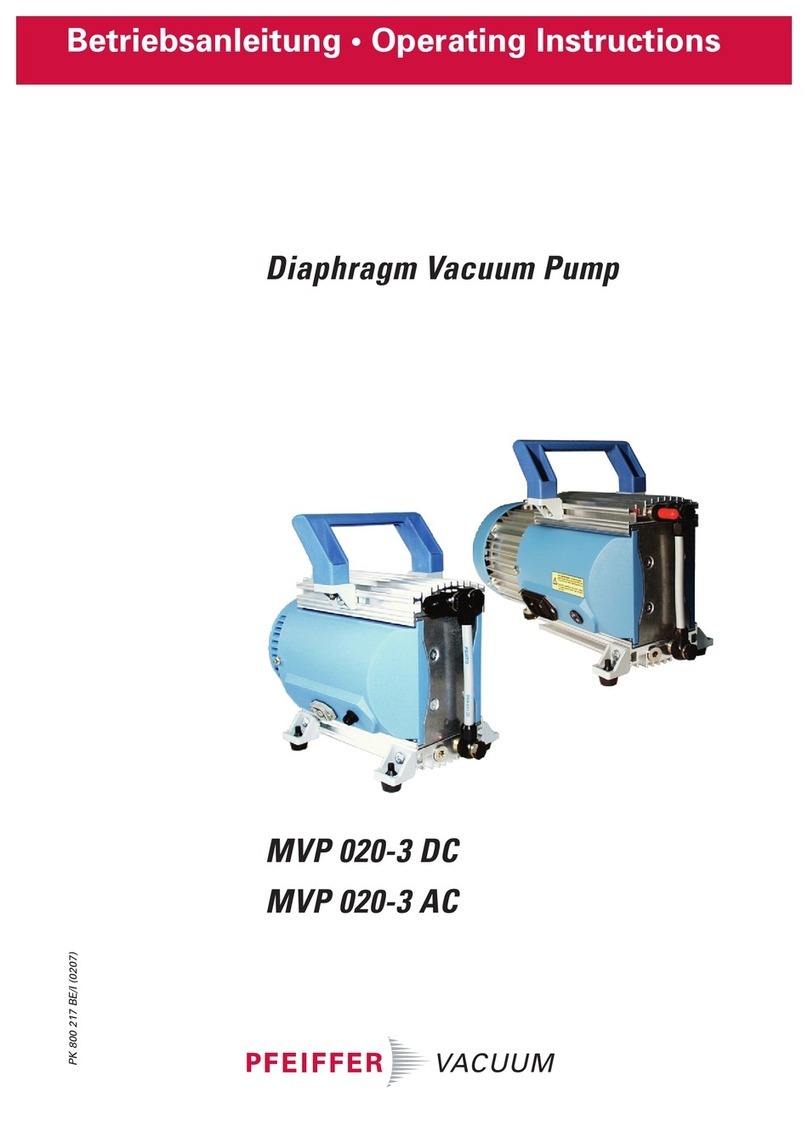
Pfeiffer Vacuum
Pfeiffer Vacuum MVP 020-3 DC operating instructions

EMP
EMP E2512A installation manual
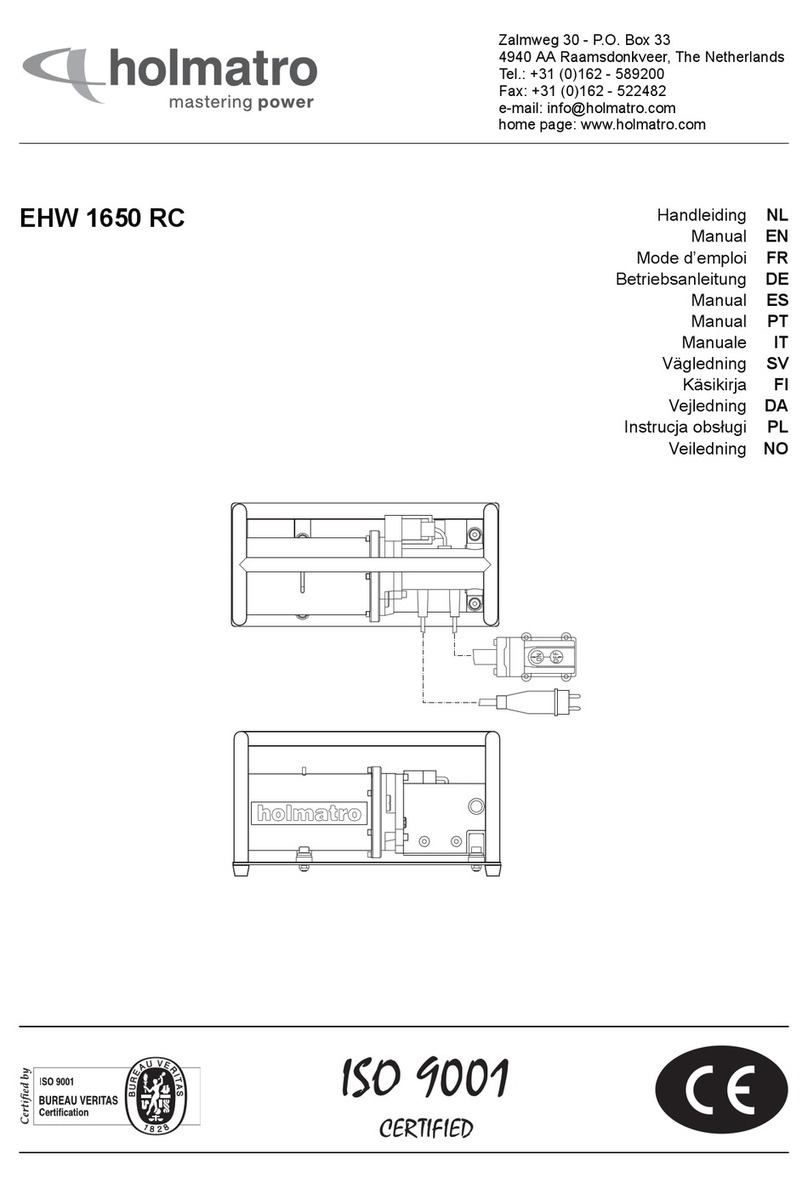
Holmatro
Holmatro EHW 1650 RC manual
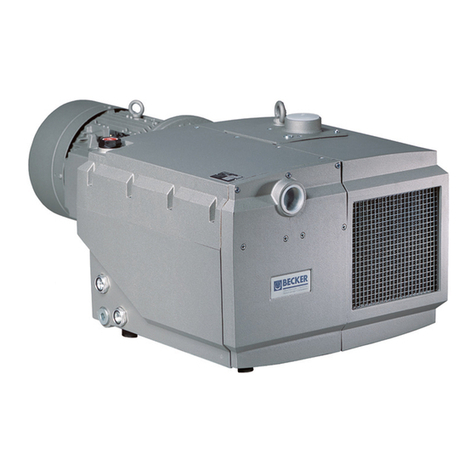
Becker
Becker U 4.100 operating instructions
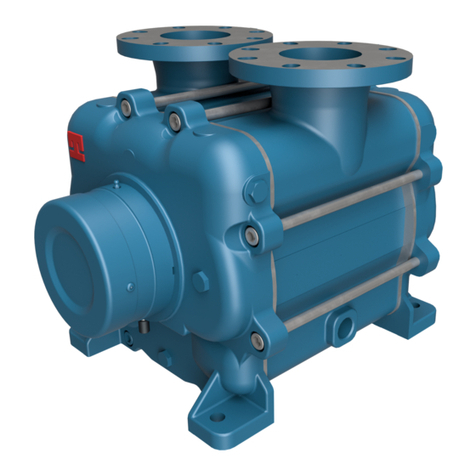
Pompetravaini
Pompetravaini TRH Series operating manual

salmson
salmson MINI SUBSON Installation and operating instructions

Consolidated
Consolidated VYNIL-VAC ASP-1105 manual
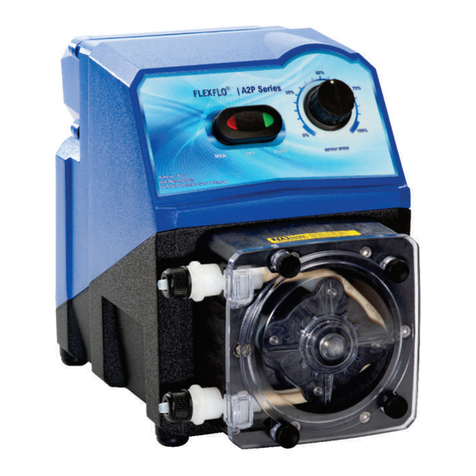
Blue-White industries
Blue-White industries FLEXFLO A2P Series operating manual

SAMES KREMLIN
SAMES KREMLIN REXSON 2B750 user manual
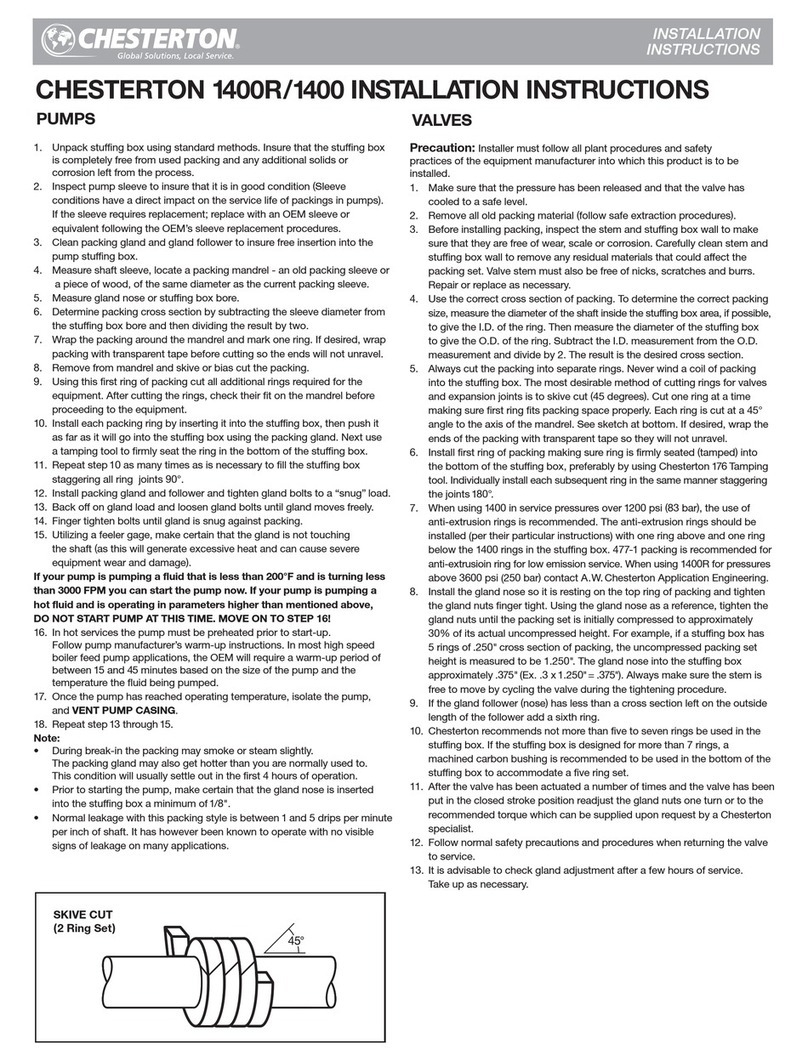
Chesterton
Chesterton 1400R installation instructions

